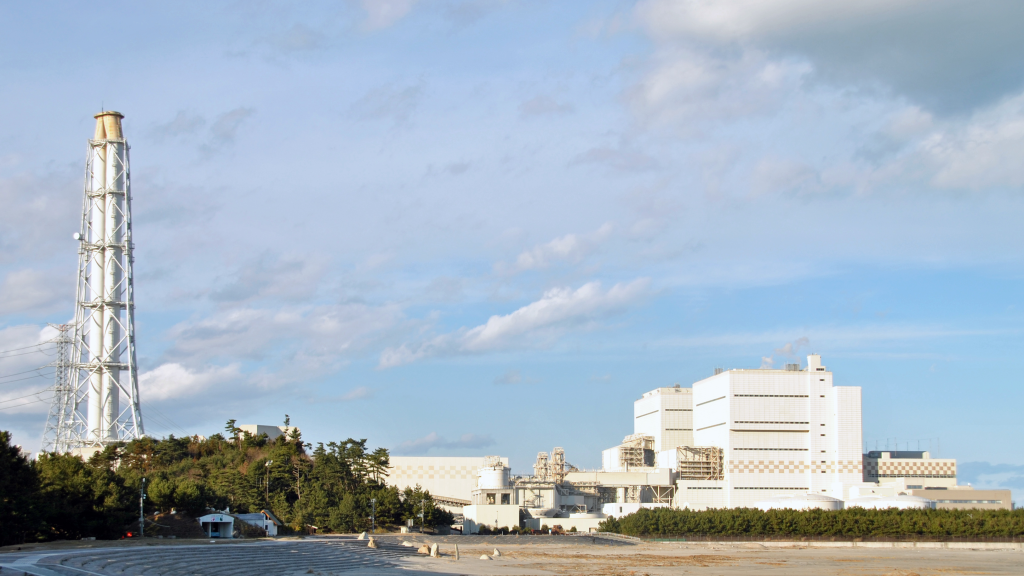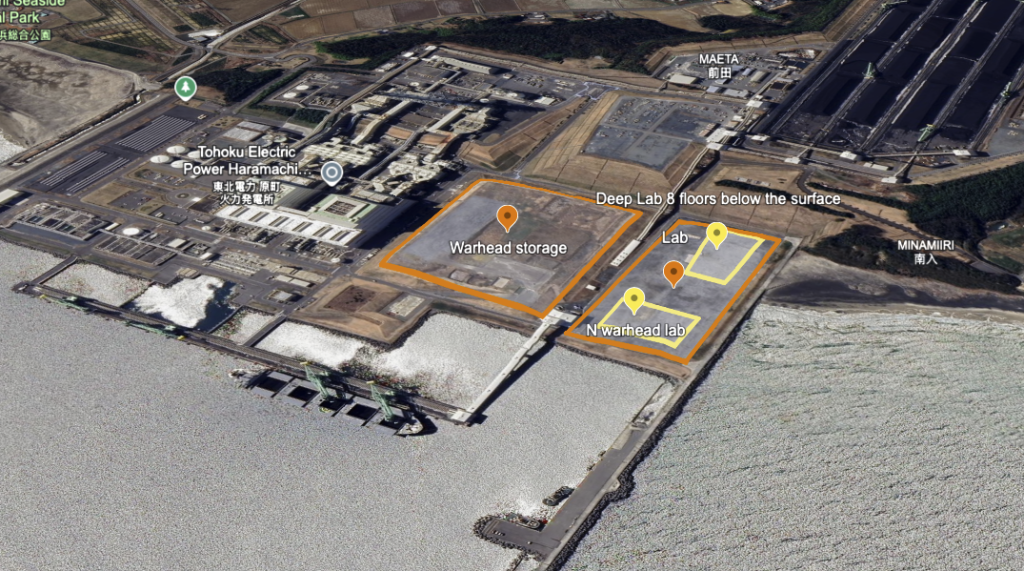Haramachi Conventional Power Plant
Hidden Trigger of Disaster
If the solar storm was the First Cause of this catastrophe, what could have been the consequent Second Trigger that prompted the TEPCO reactor meltdowns? The answer lay hidden inside that underground bunker by the coal dock in Haramachi, located less than 6 km north of the TEPCO nuclear station at Okuma town. The politically correct global warming crowd can complain about coal all they want, but one thing is certain, the black organic fuel is not highly radioactive. So what was inside the mysterious deep bunker?

View location on nationwide electric power infrastructure map
from weapons.html:
All of its 20,000kW output is allocated to the TEPCO Fukushima No.1 nuclear plant or used on-site for indeterminate purposes. Why does a large-scale conventional power plant have to be dedicated to powering a nuclear plant along with its own massive energy consumption?
This question is the key to unlocking the secret vault of nuclear-weapons production. As exposed by my April 2011 interview with a parliamentarian who was trained in nuclear engineering, the earthquake-caused collapse of the power-transmission line from Haramachi resulted in the outage that knocked out the computers controlling the Fukushima No.1 facility, the first falling domino that led to the meltdowns.
Photo 1: notice the ship cleansing its bilge of North Korean coal dust. The coal is transferred along a hopper to a trucking terminus, where large trucks (the tiny white dots) convey it to the coal storage area in the upper left corner. That area is now being used for radioactive waste storage, packed inside rows of 3-ton black poly-fiber bag.
Photo 2: The close-up of the rectangular pit reveals the outline of a lab, about 2-3 stories below the surface. During the post-quake excavation, a ramp for trucks was dug out, descending west-to-east, and then turning 180 degrees down to about 8 floors underground to the second deeper lab. In between the two cavernous structure areas, poly bags of low-level waste were being laid to provide a radioactive cover for the highly contaminated site, as a literal cover so that any analysts of data from ground-detection satellites would assume it’s a mere nuclear waste site rather than a wasted nuclear site.
Why would a nuclear-weapons lab be positioned so close to the shoreline? Obviously for offloading US-warhead material and to transport the warheads to naval ports for loading onto submarines. In exchange for quiet cooperation in the nuclear blame game, Haramachi could also in the past have secretly supplied the DPRK with fissile materials, to create a strategic rationale for Japan’s own nuclear program.
At least 1,000 nuclear-weapons technicians and Self-Defense Force soldiers were killed inside the flooded Haramachi lab with no chance of escape or rescue due to the intense nuclear releases.




